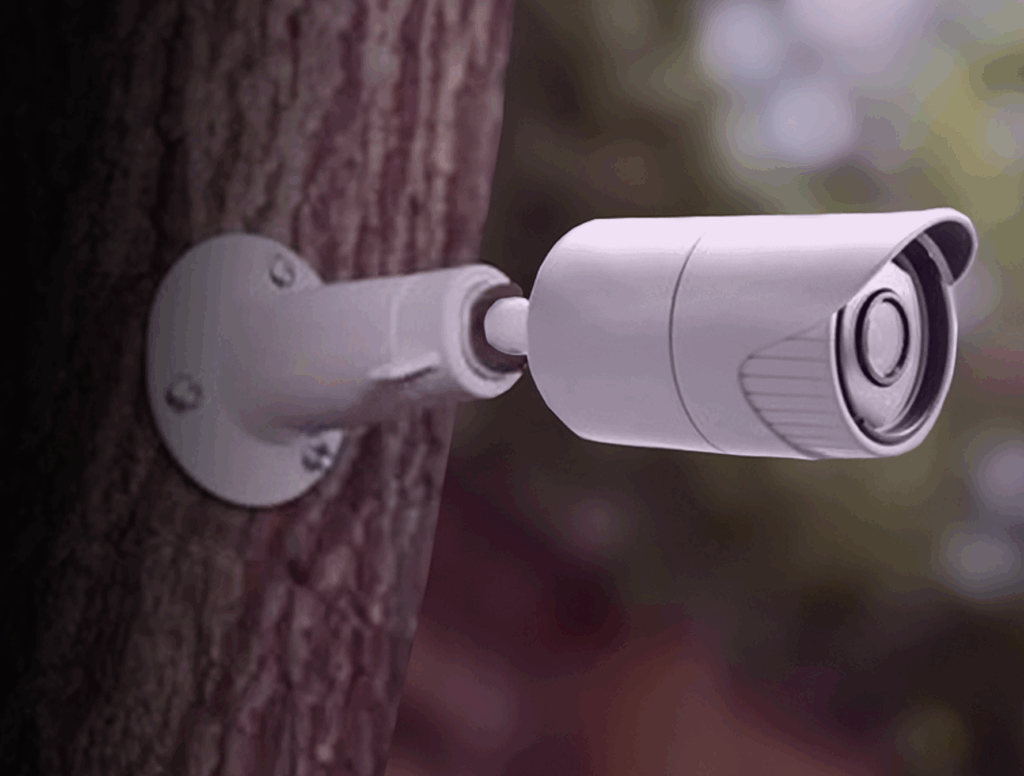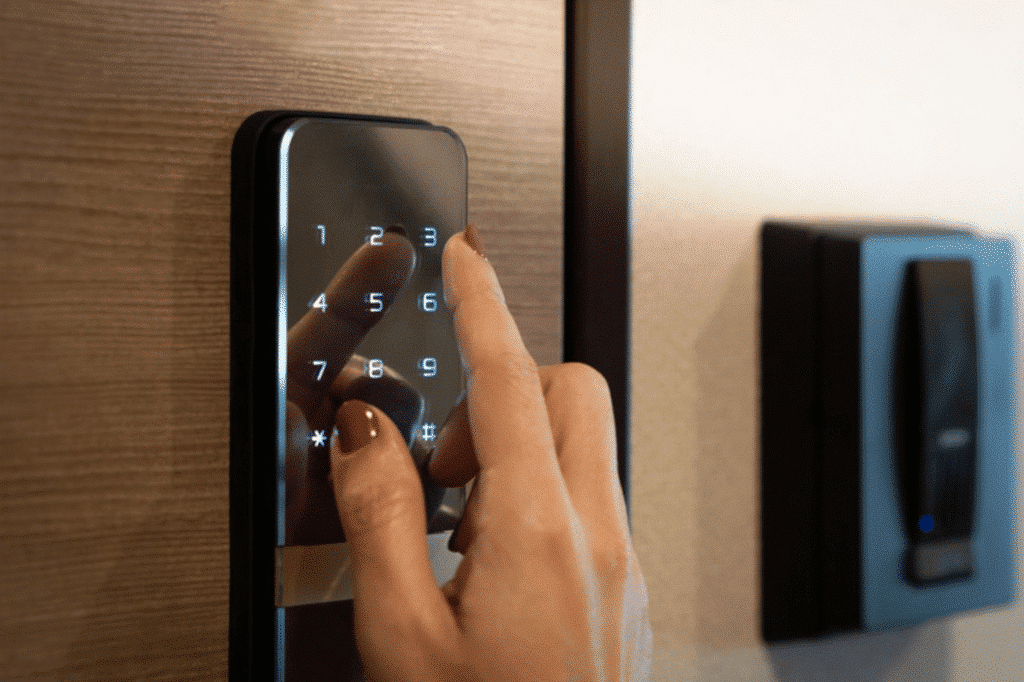
Is your “smart” home behaving like a dumb house? There is hope. Wi-Fi HaLow™ delivers a secure, reliable connection for all your connected devices.
Consumers have embraced the concept of relying on convenient, internet-connected devices to automate functions within their homes. Gone are the days of manually setting the thermostat or putting lights on mechanical timers. Now these functions can be controlled from anywhere via a smart phone app or even by AI in the cloud. Broadband service connections provide ample bandwidth and low latency to the home, but a good wireless link between modem and devices has proved elusive.
Is Wi-Fi the answer?
Wi-Fi seemed to be the promised last link to bring everything together. Manufacturers rushed to fill the demand for connected appliances, security systems, door locks, switches, lights, garage door openers and virtual assistant speakers. By providing new convenience and functionality to the home-owner, while gathering analytics and extending reach of diagnostic capabilities, manufacturers have found ways to offset the additional manufacturing and maintenance costs of connected devices. Consumers have assumed that device-makers have used safe, secure architectures for deploying and maintaining their services.
However, several common problems have plagued the varied use scenarios of these connected products: high power consumption of traditional Wi-Fi connections, dead spots and poor coverage due to varied home construction techniques and building materials, crowded 2.4GHz and 5GHz RF spectrum, complex deployment/setup procedures, and hackers exploiting holes in security.
Consumers’ expectations of simple, reliable and secure connections have driven manufacturers to cobble together a mix of proprietary wireless technologies that are costly to install and securely maintain
Custom-made, Costly, Complicated
Consumers have been forced to use proprietary wireless hub devices running on Zigbee, Z-wave, Bluetooth and other non-standard RF techniques, and bridge it to the Wi-Fi router. They have come to believe that frequent battery replacements or AC power supplies are needed. They have been forced to use network extenders for devices located for from the router and wired power or large rechargeable batteries for security cameras and sensors.
In the absence of better long-distance solutions, manufacturers have fallen back on power-hungry cellular phone technology with recurring subscription fees and unpredictable data use charges. Hackers have exploited holes in the security of thinly-protected authentication protocols on devices which do not have the capacity for OTA updates to respond to new threats.
IEEE 802.11ah Wi-Fi HaLow™ is the wireless technology that can solve the problems existing wireless solutions for IoT face — using a scalable industry standard.
How Wi-Fi HaLow from Morse Micro solves these problems
IEEE 802.11ah Wi-Fi HaLow is a purpose-built for the specific needs of IoT devices: longer distances, lower power dissipation, better penetration through building materials, adequate bandwidth, improved network capacity, ease of deployment and installation, lifecycle security, over-the-air (OTA) updates and low cost of materials.
Let’s look into each of these requirements separately. Starting with IoT needs for distance and power, moving on to penetration, bandwidth, security and lastly capacity.
DISTANCE
The sub-1GHz frequencies of Wi-Fi HaLow using narrow 1MHz channels travels ten times farther than legacy Wi-Fi, without the need for network extenders. Battery-powered cameras can be placed in more convenient locations where they are needed outside the walls of a home or garage. Lighting systems can be controlled from a single AP, regardless of whether the fixture is indoors or out in the garden. Providing customers with a solution that reaches 100m farther — without additional extenders or cellular data plans — is a huge competitive advantage.

Distance is just as important as the next requirement:
POWER
Wi-Fi HaLow requires less power than conventional Wi-Fi to reach longer distances, while providing adequate bidirectional data transfers. Various new sleep modes are specified by IEEE 802.11ah that allow devices to stay in very low power states for extended periods of time — conserving battery energy.

Morse Micro is applying its decades of low-power IC design experience to create a solution which can be powered by a simple coin cell battery with average power consumption below 10uW. With such low power Morse Micro’s HaLow technology can be used in devices which historically had to rely on Zigbee, Bluetooth or proprietary technologies.
PENETRATION
Wi-Fi HaLow’s superior reach through buildings will reduce customer service calls and product returns that plague products based on ordinary Wi-Fi. The lower frequencies used by Wi-Fi HaLow penetrate through various building materials better than 2.4GHz and 5GHz, while consuming less power.
Wi-Fi HaLow uses OFDM modulation to correct for reflections and multi-path environments. Device manufacturers can be assured of a robust HaLow connection to the AP, whether their products are placed inside or outside, or whether in the basement or the attic of a home. This eliminates the added complexity and cost of supplying proprietary hub or bridge devices to compensate for consumers’ varied home architectures across the globe.
BANDWIDTH
Similar to traditional Wi-Fi, Wi-Fi HaLow can automatically scale bandwidth depending on signal integrity and distance from the AP.
These pre-defined Modulation and Coding Scheme (MCS) levels support bandwidths from 150Kbps to 40Mbps, for single-stream, single-antenna (1×1) products using channel widths varying between 1, 2, 4 and 8MHz, with up to 80Mbps capability using an optional 16MHz wide channel. Automatically selection of the most appropriate MCS rate ensures that data is transferred quickly.
This is important as the faster the data transfer the less battery energy used and the less time the device needs on the radio waves — thus leaving them free for use by other devices.
SECURITY
IEEE 802.11ah includes the latest Wi-Fi requirements for authentication (WPA2/WPA3) and AES encryption of traffic over the air. Morse Micro products also offer unique device ID technology to support encrypted and signed data for communications with trusted platforms over IPv6 networks. Device manufacturers can build products which comply with ISO / IEC cyber security standards. Morse Micro will continuously improve its products which device-makers can pass on to consumers in the field via OTA firmware updates. This ensures that devices never need miss out on future security upgrades.
CAPACITY
Up to 8,191 devices can be addressed by a single Wi-Fi HaLow AP. That should be enough capacity to cover every light bulb, door lock, window shade, thermostat, hot H2O boiler, refrigerator, smoke detector, switch, solar panel, camera, car charger and every imaginable smart home device for the distant future.
Typical Wi-Fi routers for the home only support tens of devices. If deployed into the home by a broadband service provider, the Wi-Fi HaLow AP can become a platform for additional revenue via subscriptions to security and utility management devices and services for one or more homes in a neighborhood.
HaLow is a star network topology and so does not suffer from the capacity problems of mesh networks. With a mesh network the radio spectrum get congested with duplicates of the same messages being sent over and over again.
EASE OF DESIGN, DEPLOYMENT & INSTALLATION
Morse Micro’s SOCs provide a complete solution incorporating the radio, phy, MAC, security, processor and memory components required for Wi-Fi HaLow. Popular I/O and connection interfaces are included, as well as host applications processor options. This highly integrated solution was difficult for Morse to design, but easy for our customers to use.


